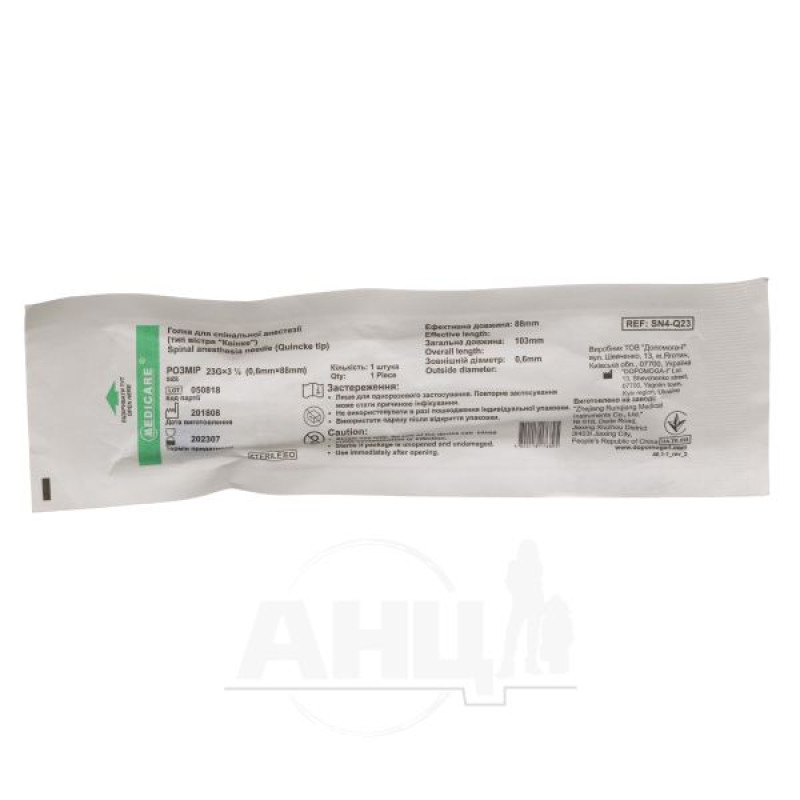Medicare Spinal Anesthesia Needle (Quinquent Point Type) 23g x 3 1/2 (0.6mm x 88mm)

Medicare spinal anesthesia needle (Quincke point type) size 23G (0.6 mm x 88 mm) for puncture and administration of solutions during treatment or anesthesia into the patient's subarachnoid space.
Advantages
Made of fairly thin, high-quality surgical steel with a smooth surface, which allows for easy and correct atraumatic punctures.
Precise alignment of the instrument and stylet protects against biopsy side effects. And the colorless base of the needle with a magnifying glass effect is designed for clear visualization of the cerebrospinal fluid.
The medical instrument pavilion has a convenient grip for performing the procedure, as well as a different color palette, depending on the diameter of the product.
Quincke-type spinal needles do not contain silicone, which means that the patient will not have allergic reactions. They are also characterized by the absence of side effects.
Method of application
The Quincke-type spinal needle is intended for single use and is available in individual gnotobiotic blister packs with instructions for proper use on them. The shelf life is 5 years.
The kit also includes a wing-shaped plate, which is removable. It is designed for comfortable attachment and better feel of the product in the doctor's fingers during the procedure. The introducer is designed so that the spinal instrument is less painful and does not come into contact with the patient's skin.
Intravenous anesthesia must be administered before spinal anesthesia. Anesthesia can be administered either in a sitting position or with the patient lying on their side.
First, the skin should be disinfected and a sterile surgical cloth should be applied. Then, the skin should be anesthetized using a thin needle and syringe from the kit.
A conductive medical instrument is inserted into the site of anesthetic injection. After securing it, a needle for subarachnoid anesthesia is inserted.
If you have reached yellow binding (you will feel increased resistance), remove the stylet without moving the needle in the tissues and advance it to a depth of 5 mm.
Then attach the syringe and inject the local analgesic depending on the required dose. Then remove the subarachnoid needle along with the guiding instrument.
There are no reviews for this product.
There are no reviews for this product, be the first to leave your review.
No questions about this product, be the first and ask your question.
